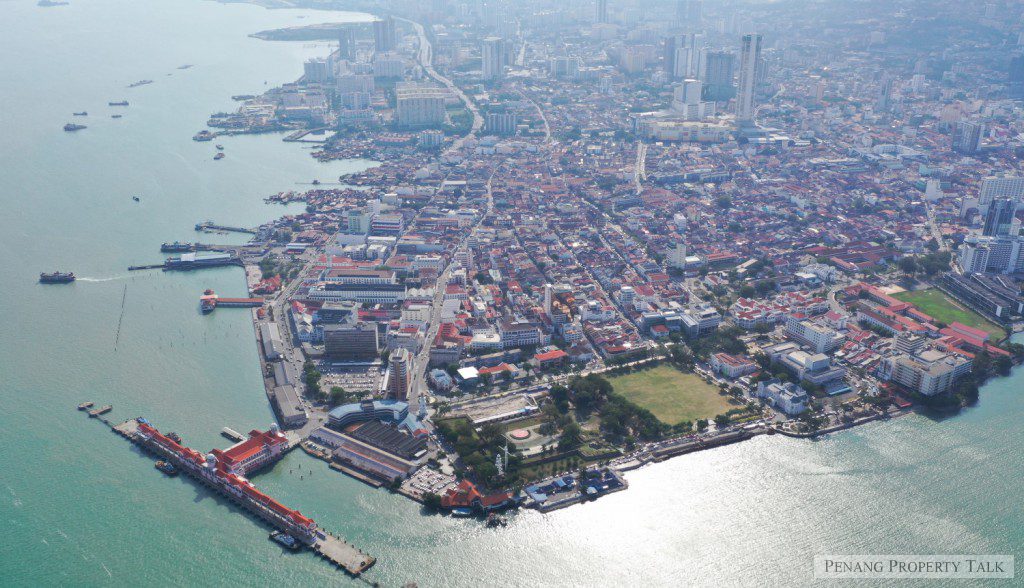Penang property market sees improvement
(This is one of the latest valuable insights from the prominent property consultant the late Michael Geh)
The Malaysian property market seems to be gradually recovering from the turmoil caused by the Covid-19 pandemic, with more transactions being recorded. In Penang, the property market trended upwards in 2H2020, which saw 9,936 deals worth RM4.57 billion.
This was an improvement from 1H2020, when 5,836 transactions valued at RM3.25 billion were recorded, according to data provided by the National Property Information Centre (Napic). However, the performance was somewhat mixed compared with the figures from 2H2019, which had fewer transactions (8,858) but a slightly higher total value (RM4.59 billion) than in 2H2020.
In presenting the 1Q2021 Penang Housing Property Monitor, Raine & Horne International Zaki + Partners Sdn Bhd senior partner Michael Geh notes that residential units made up the bulk of transactions in 2H2020. About 85% of these residential units were on the secondary market.
“A total of 7,443 residential units (valued at RM2.91 billion) were sold in 2H2020 versus 4,293 transactions in 1H2020 (worth RM1.68 billion). The secondary market commanded a large portion of the residential property transactions at 6,330 (valued at RM2.38 billion) out of the total of 7,443 transactions during the period in review,” he tells City & Country.
“A similar trend happened in 1H2020, when the secondary market recorded 4,025 transactions, compared with 268 transactions on the primary market. However, the primary market saw a rebound to 1,113 transactions in 2H2020.”
Commercial and industrial properties also saw a greater number of transactions but a lower total value in 2H2020. In all, 813 units of commercial properties worth RM620 million were transacted in 2H2020, compared with 511 transactions valued at RM690 million in 1H2020. During the period in review, 210 industrial properties worth RM400 million were sold, compared with 152 transactions valued at RM410 million in the first half of the year.
Geh explains that while the higher transaction volumes indicate a brisk market, the lower total value means that property prices have softened. “Serious sellers have placed their properties at lower asking prices, which have resulted in lower transacted prices. Home Ownership Campaign-related discounts and developer rebates have also contributed to the lower prices,” he says.
In Penang, the sales of both development and agricultural land increased in 2H2020. A total of 609 parcels of development land (valued at RM320 million) were transacted during the period in review, compared with 390 tracts (worth RM290 million) in 1H2020. Meanwhile, 861 parcels of agricultural land (valued at RM320 million) were transacted in 2H2020 versus 490 (worth RM180 million) in 1H2020.
Property overhang
According to data provided by Napic, 2,069 units of completed residential properties in Penang remained unsold at end-2020. These included 1,559 apartment units, 194 two- and three-storey terraced homes, and 180 two- and three-storey semidees. About two-thirds of the properties were priced above RM300,001, with 666 units (32%) priced between RM300,001 and RM500,000 and 675 units (33%) priced between RM500,001 and RM1 million.
There were also 579 units (28%) of unsold completed residential properties priced between RM100,001 and RM200,000 and 53 units (3%) priced between RM200,001 and RM300,000. These properties are mainly in Seberang Perai Tengah (37%) and Timur Laut (26%), followed by Barat Daya (19%), Seberang Perai Selatan (10%) and Seberang Perai Utara (8%).
Flat performance
Geh says there weren’t any major launches in Penang during the period in review. “In terms of upcoming major launches, Eco World Development Group Bhd is planning to launch co-home units within Camdon Collection @ Eco Horizon, but has yet to reveal the date,” he adds.
On the 1Q2021 Penang Housing Property Monitor, Geh says it has been a somewhat flat performance in the schemes sampled after slight movements in price and stagnant rents in previous quarters. That is because the schemes sampled are mature traditional residential areas.
“Everybody appears to be happy living in these areas and the families are not selling their homes. Developers are aggressively selling their existing stock, especially the completed projects. It seems that clearing unsold stock is taking priority over new launches,” he says.
Schemes that saw price movements, albeit marginal, during the period in review included 1-storey terraced houses (1,200 to 1,600 sq ft) in Sungai Dua, where the average selling price fell RM10,000 to RM770,000. The last time this scheme experienced a decline was in 2Q2020, when it dropped RM20,000 to RM780,000. The 2-storey semi-detached houses (3,000 to 4,000 sq ft) in Sungai Dua also saw the average selling price fall to RM1.5 million from RM1.6 million in the previous quarter.
Another area where prices dropped were the standard 2-storey terraced houses (1,300 to 1,800 sq ft) in Green Lane, which fell to RM1.1 million from RM1.25 million on average in the preceding quarter.
Rents in the schemes sampled remained stagnant in general. Due to the lower prices but unchanged rents, the yields for 1-storey terraced houses (1,200 to 1,600 sq ft) in Sungai Dua, 2-storey semi-detached houses (3,000 to 4,000 sq ft) in Sungai Dua and standard 2-storey terraced houses (1,300 to 1,800 sq ft) in Green Lane increased to 1.9%, 1.3% and 1.6% respectively in 1Q2021.
Source: TheEdgeMarkets.com



The market is just warming up ?
@tahusamatahu
The market will be in the longkang for the next 10 years. Not only is there a serious overhang from developer side (both completed and launched but not completed), but also from private owner side, many of whom have bought their properties in the last 5-6 years, but couldn’t flip, and ended up having to rent those properties out at pathetically low rentals as there is not enough renters in the market to absorb that “overhang”.
It is very common to see today properties for which owners paid 800k, but only manage to rent out (furnished) at 2k (it’s even less after deducting maintenance fees), and that amount is not even enough to cover mortgage interest. In other words, owners are “paying” tenants to stay in the properties!! :))))))))
And when I say in the longkang for 10 years, that doesn’t mean it can climb out of longkang after that, as developers are able to supply the market in large volume in a short span of time due to high plot ratio allowed by our state gov, that basically means “investing” in properties in PG is as good as throwing money into the longkang. :)))))
Improvement for developers and state government.